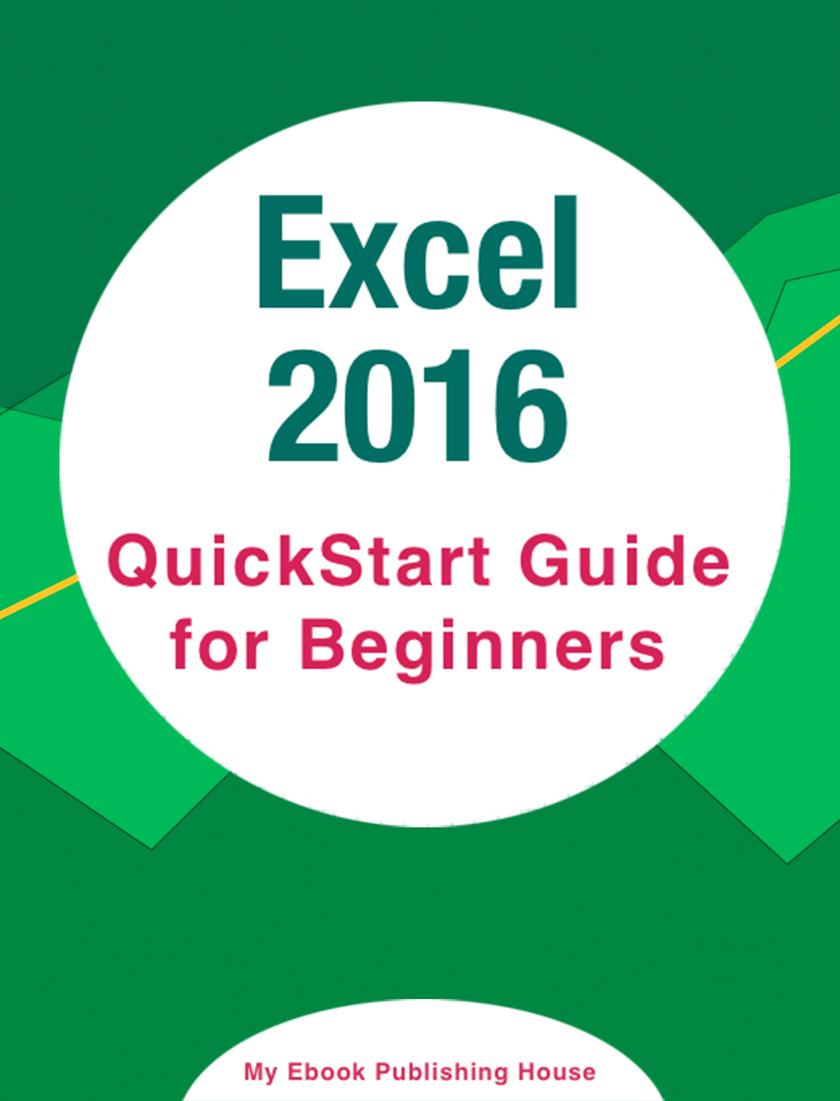
Excel 2016: QuickStart Guide for Beginners
¥24.44
Excel 2016: QuickStart Guide for Beginners
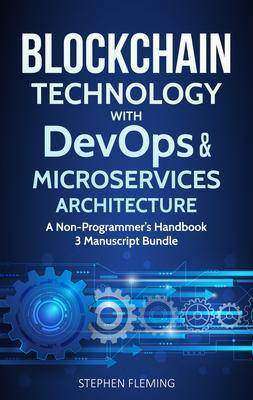
Blockchain Technology with DevOps and Microservices Architecture: A Non-Programm
¥27.82
Blockchain Technology with DevOps and Microservices Architecture: A Non-Programmer's Handbook
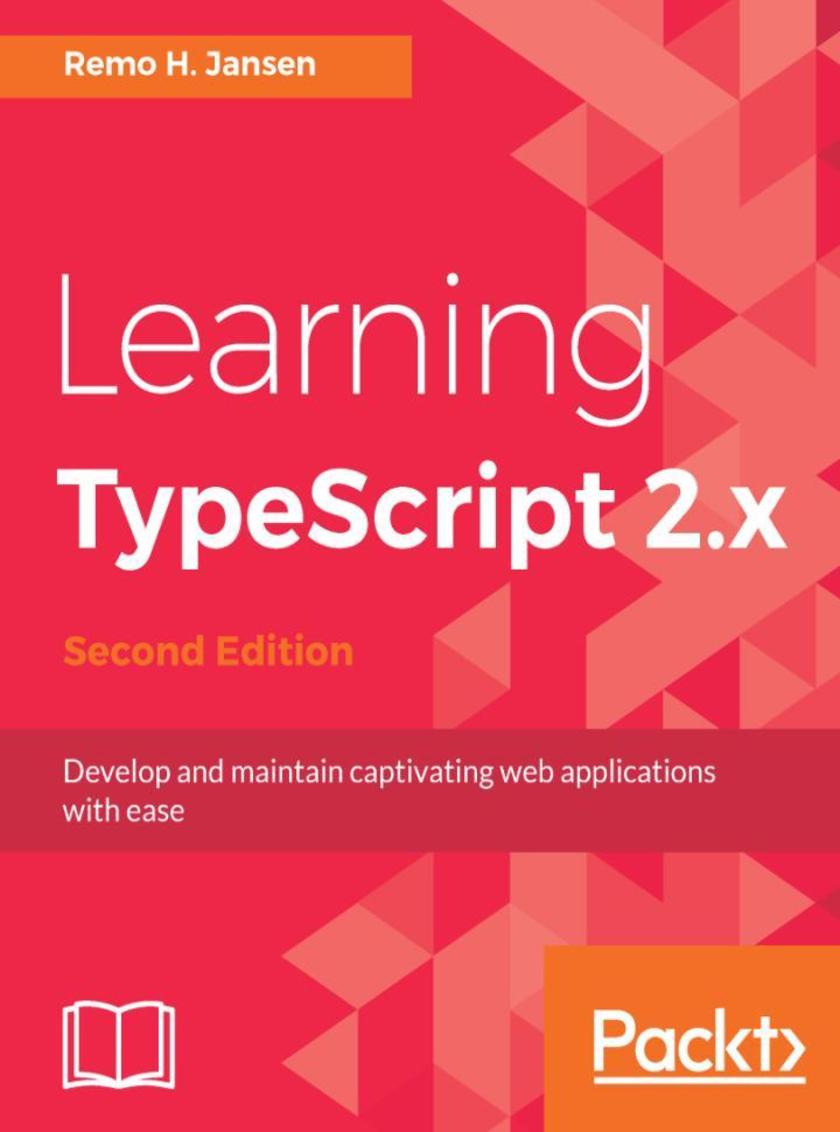
Learning TypeScript 2.x
¥90.46
Exploit the features of TypeScript to easily create your very own web applications About This Book ? Develop modular, scalable, maintainable, and adaptable web applications by taking advantage of TypeScript ? Walk through the fundamentals of TypeScript with the help of practical examples ? Enhance your web development skills using TypeScript 2.x Who This Book Is For If you are a developer aiming to learn TypeScript to build attractive web applications, this book is for you. No prior knowledge of TypeScript is required. However, a basic understanding of JavaScript would be an added advantage. What You Will Learn ? Understand TypeScript in depth, including its runtime and advanced type system features ? Master the core principles of the object-oriented programming and functional programming paradigms with TypeScript ? Save time using automation tools such as Gulp, Webpack, ts-node, and npm scripts ? Develop robust, modular, scalable, maintainable, and adaptable applications with testing frameworks such as Mocha, Chai, and Sinon.JS ? Put your TypeScript skills to practice by developing full-stack web applications with Node.js, React and Angular ? Use the APIs of the TypeScript compiler to build custom code analysis tool In Detail TypeScript is an open source and cross-platform statically typed superset of JavaScript that compiles to plain JavaScript and runs in any browser or host. This book is a step-by-step guide that will take you through the use and benefits of TypeScript with the help of practical examples. You will start off by understanding the basics as well as the new features of TypeScript 2.x. Then, you will learn how to work with functions and asynchronous programming APIs. You will continue by learning how to resolve runtime issues and how to implement TypeScript applications using the Object-oriented programming (OOP) and functional programming (FP) paradigms. Later, you will automate your development workflow with the help of tools such as Webpack. Towards the end of this book, you will delve into some real-world scenarios by implementing some full-stack TypeScript applications with Node.js, React and Angular as well as how to optimize and test them. Finally, you will be introduced to the internal APIs of the TypeScript compiler, and you will learn how to create custom code analysis tools. Style and approach This is a step-by-step guide that covers the fundamentals of TypeScript with practical examples.
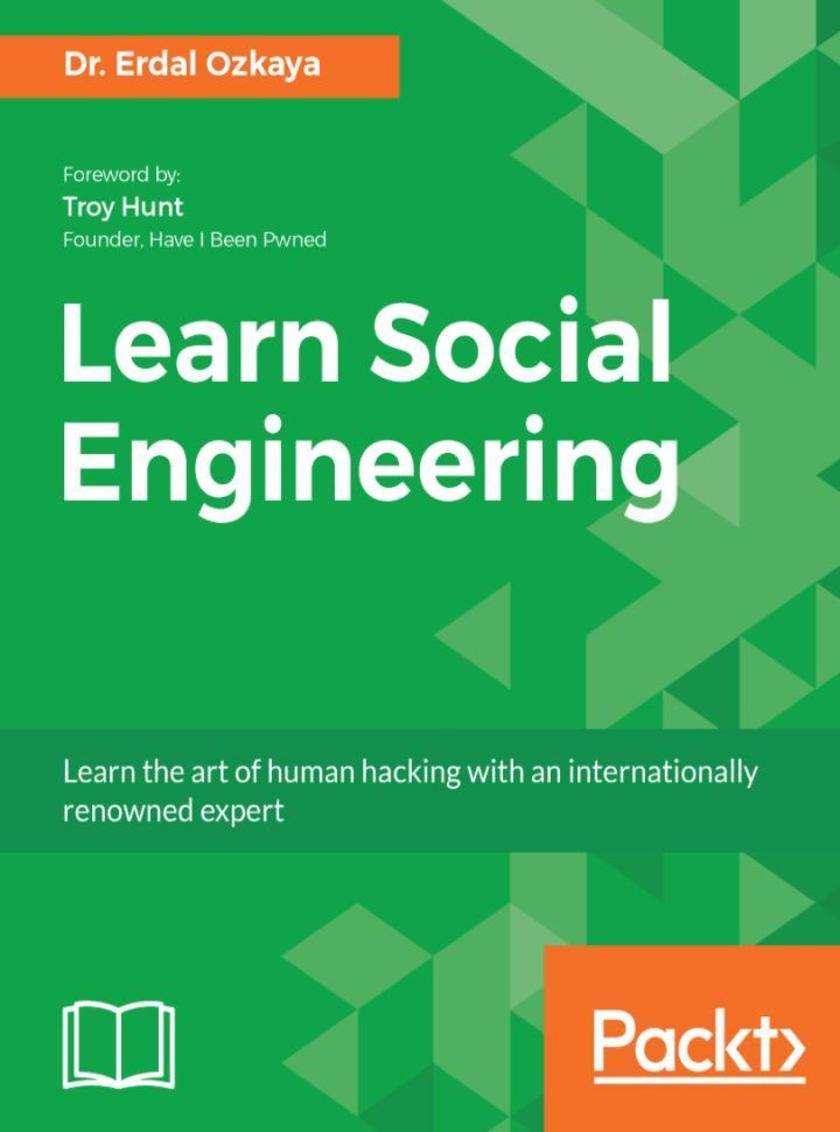
Learn Social Engineering
¥73.02
Improve information security by learning Social Engineering. About This Book ? Learn to implement information security using social engineering ? Get hands-on experience of using different tools such as Kali Linux, the Social Engineering toolkit and so on ? Practical approach towards learning social engineering, for IT security Who This Book Is For This book targets security professionals, security analysts, penetration testers, or any stakeholder working with information security who wants to learn how to use social engineering techniques. Prior knowledge of Kali Linux is an added advantage What You Will Learn ? Learn to implement information security using social engineering ? Learn social engineering for IT security ? Understand the role of social media in social engineering ? Get acquainted with Practical Human hacking skills ? Learn to think like a social engineer ? Learn to beat a social engineer In Detail This book will provide you with a holistic understanding of social engineering. It will help you to avoid and combat social engineering attacks by giving you a detailed insight into how a social engineer operates. Learn Social Engineering starts by giving you a grounding in the different types of social engineering attacks,and the damages they cause. It then sets up the lab environment to use different toolS and then perform social engineering steps such as information gathering. The book covers topics from baiting, phishing, and spear phishing, to pretexting and scareware. By the end of the book, you will be in a position to protect yourself and your systems from social engineering threats and attacks. All in all, the book covers social engineering from A to Z , along with excerpts from many world wide known security experts. Style and approach A step-by-step practical guide that will get you well acquainted with Social Engineering. You’ll be able to get started with it in a matter of minutes with the help of different tools such as the Social Engineering toolkit , Kali Linux and so on.
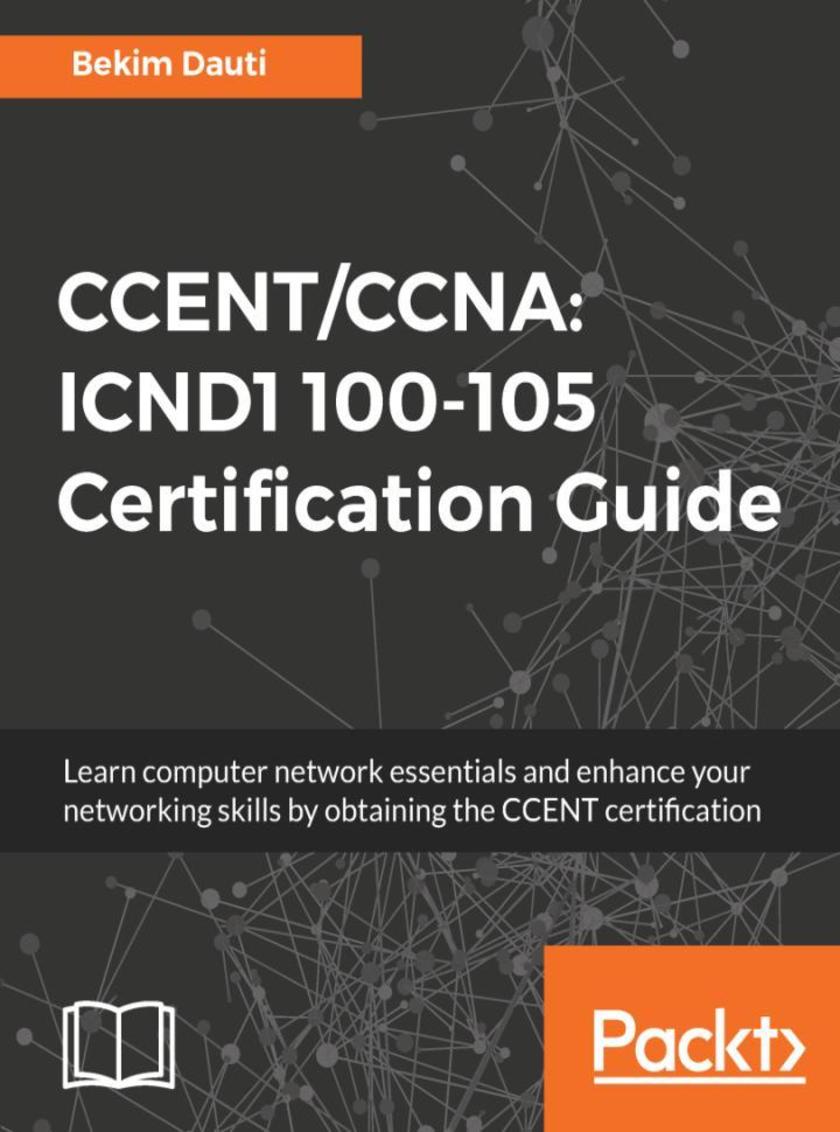
CCENT/CCNA: ICND1 100-105 Certification Guide
¥54.49
Become familiar with ICND1 (100-105) exam objectives, and learn how to get ready for the exam About This Book ? A step by step guide that will build you skills from basic concepts to completely understanding network communication ? Comprehensive coverage to help you implement the knowledge you've gained in real-world scenarios ? Take practice questions and mock tests to check how prepared you are for the CCENT exam Who This Book Is For If you are a Network Administrator, Network Technician, Networking professional, or would simply like to prepare for your CCENT certification, then this book is for you. Some basic understanding of networks and how they work would be helpful. Sufficient information will be provided to those new to this field. What You Will Learn ? Get to grips with the computer network concepts ? Understand computer network components and learn to create a computer network ? Understand switching and learn how to configure a switch ? Understand routing and learn how to configure a router ? Understand network services and the maintenance process ? Learn how to troubleshoot networking issues ? Become familiar with, and learn how to prepare for, the ICND1 100-105 exam In Detail CCENT is the entry-level certification for those looking to venture into the networking world. This guide will help you stay up-to date with your networking skills. This book starts with the basics and will take you through everything essential to pass the certification exam. It extensively covers IPv4 and IPv6 addressing, IP data networks, switching and routing, network security, and much more—all in some detail. This guide will provide real-world examples with a bunch of hands-on labs to give you immense expertise in important networking tasks, with a practical approach. Each chapter consists of practice questions to help you take up a challenge from what you have procured. This book ends with mock tests with several examples to help you confidently pass the certification. This Certification Guide consists of everything you need to know in order to pass the ICND 1 100-105 Exam, thus obtaining a CCENT certification. However, practicing with real switches and routers or a switch or router simulator will help you succeed. Style and approach This book is for everyone! It will help beginners who are taking their first steps into the world of computer networks. At the same time, this book can be used by intermediate and advanced network administrators to recap computer network concepts. It will be a handy certification guide for anyone who is studying and preparing to take the Interconnecting Cisco Networking Devices Part 1 (100-105) exam, thus obtaining CCENT certification, which will be a handy professional asset.
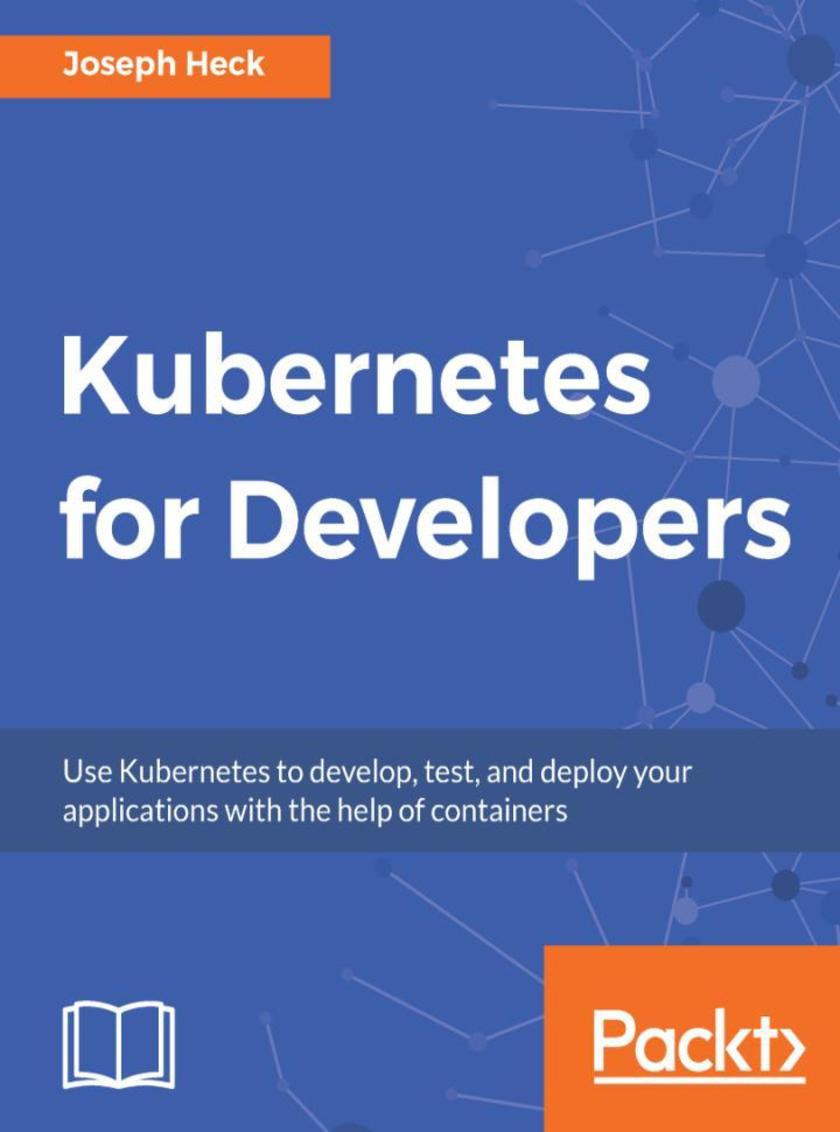
Kubernetes for Developers
¥81.74
A developer's field-guide to designing scalable services using Kubernetes About This Book ? Develop and run your software using containers within a Kubernetes environment ? Get hands-on experience of using Kubernetes with DevOps concepts such as continuous integration, benchmark testing, monitoring, and so on ? Pragmatic example-based approach showing how to use Kubernetes in the development process Who This Book Is For If you are a full-stack or back-end software developers interested, curious, or being asked to test as well as run the code you're creating, you can leverage Kubernetes to make that process simpler and consistent regardless of where you deploy. If you're looking for developer focused examples in NodeJS and Python for how to build, test, deploy, and run your code with Kubernetes, this is perfect for you. What You Will Learn ? Build your software into containers ? Deploy and debug software running in containers within Kubernetes ? Declare and add configuration through Kubernetes ? Define how your application fits together, using internal and external services ? Add feedback to your code to help Kubernetes manage your services ? Monitor and measure your services through integration testing and in production deployments In Detail Kubernetes is documented and typically approached from the perspective of someone running software that has already been built. Kubernetes may also be used to enhance the development process, enabling more consistent testing and analysis of code to help developers verify not only its correctness, but also its efficiency. This book introduces key Kubernetes concepts, coupled with examples of how to deploy and use them with a bit of Node.js and Python example code, so that you can quickly replicate and use that knowledge. You will begin by setting up Kubernetes to help you develop and package your code. We walk you through the setup and installation process before working with Kubernetes in the development environment. We then delve into concepts such as automating your build process, autonomic computing, debugging, and integration testing. This book covers all the concepts required for a developer to work with Kubernetes. By the end of this book, you will be in a position to use Kubernetes in development ecosystems. Style and approach This book will cover examples using NodeJS and Python that walk you through building containers, defining your deployments, deploying, debugging, testing, and generally interacting with your code running on Kubernetes. The examples are focused on common development needs, and include pragmatic advice and the explanations behind that advice.
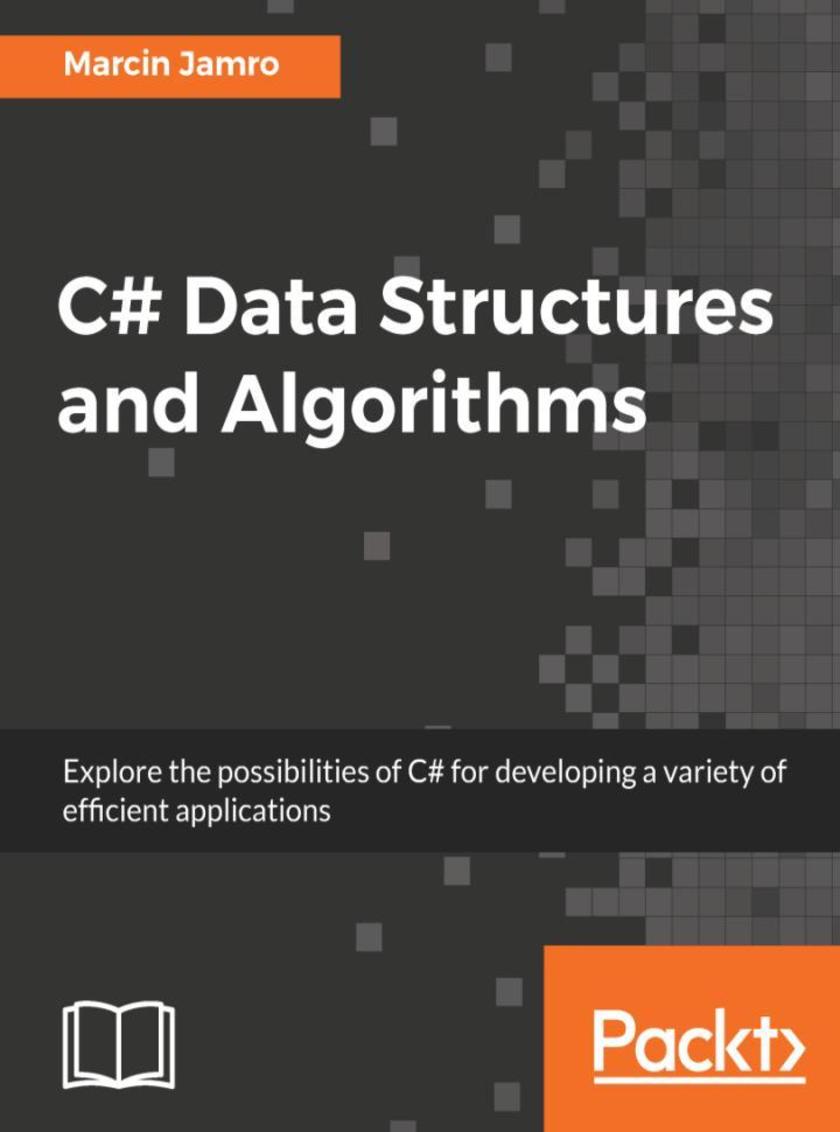
C# Data Structures and Algorithms
¥90.46
A complete guide on using data structures and algorithms to write sophisticated C# code About This Book ? Master array, set and map with trees and graphs, among other fundamental data structures ? Delve into effective design and implementation techniques to meet your software requirements ? Explore illustrations to present data structures and algorithms, as well as their analysis in a clear, visual manner. Who This Book Is For This book is for developers who would like to learn the Data Structures and Algorithms in C#. Basic C# programming knowledge would be an added advantage. What You Will Learn ? How to use arrays and lists to get better results in complex scenarios ? Implement algorithms like the Tower of Hanoi on stacks of C# objects ? Build enhanced applications by using hashtables, dictionaries and sets ? Make a positive impact on efficiency of applications with tree traversal ? Effectively find the shortest path in the graph In Detail Data structures allow organizing data efficiently. They are critical to various problems and their suitable implementation can provide a complete solution that acts like reusable code. In this book, you will learn how to use various data structures while developing in the C# language as well as how to implement some of the most common algorithms used with such data structures. At the beginning, you will get to know arrays, lists, dictionaries, and sets together with real-world examples of your application. Then, you will learn how to create and use stacks and queues. In the following part of the book, the more complex data structures will be introduced, namely trees and graphs, together with some algorithms for searching the shortest path in a graph. We will also discuss how to organize the code in a manageable, consistent, and extendable way. By the end of the book,you will learn how to build components that are easy to understand, debug, and use in different applications. Style and approach Readers will be taken through all the indispensable data structures and algorithms so they can begin their coding journey in C#. At each step, the book will show how to implement these via examples while also discussing the attributes of each algorithm so readers are capable to make an informed choice.
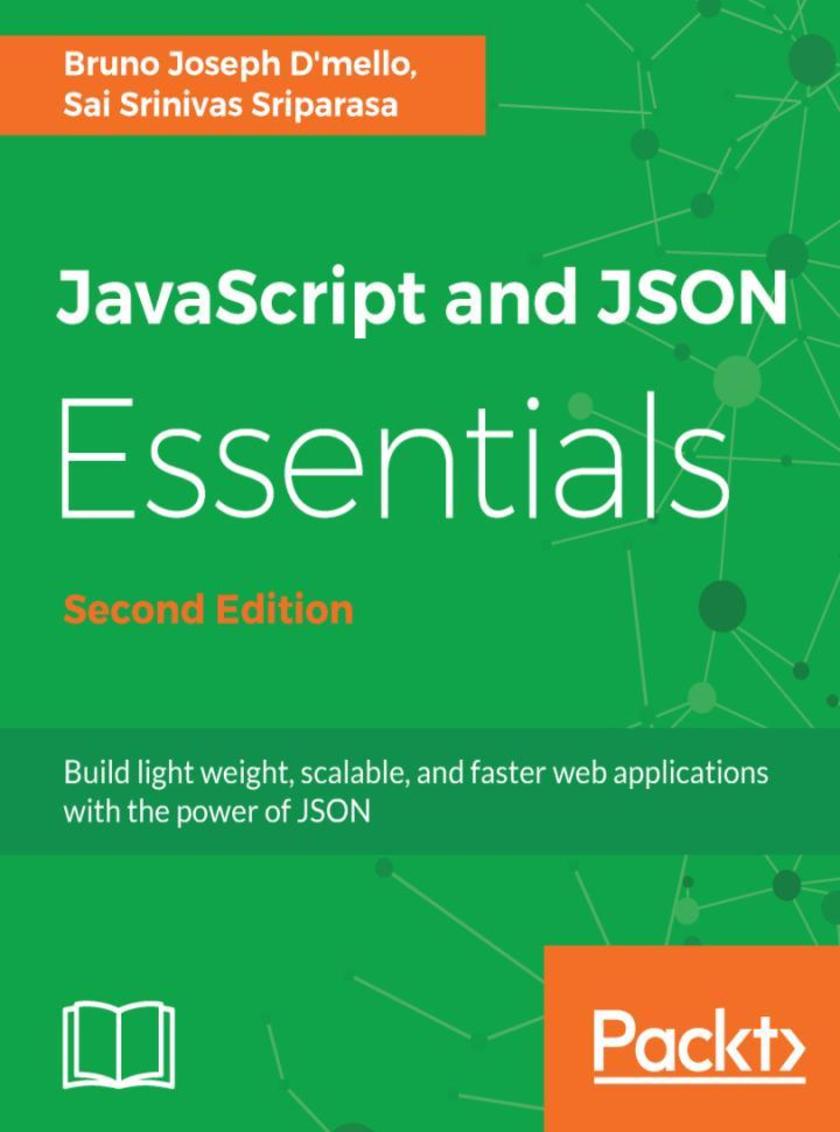
JavaScript and JSON Essentials
¥54.49
Use JSON for building web applications with technologies like HTML, JavaScript, Angular, Node.js, Hapi.js, Kafka, socket.io, MongoDB, Gulp.js, and handlebar.js, and others formats like GEOJSON, JSON-LD, MessagePack, and BSON. About This Book ? Use JSON with trending technologies like Angular, Hapi.js, MongoDB, Kafka, and Socket.io ? Debug, validate, and format JSON using developer toolkits, JSONLint, and JSON Editor Online ? Explore other JSON formats like GeoJSON, JSON-LD, BSON, and MessagePack Who This Book Is For If you’re a web developer with a basic understanding of JavaScript and want to write JSON data, integrate it with RESTful APIs to create faster and scalable applications, this book is for you. What You Will Learn ? Use JSON to store metadata for dependency managers, package managers, configuration managers, and metadata stores ? Handle asynchronous behavior in applications using callbacks, promises, generators, and async-await functions ? Use JSON for Angular 5, Node.js, Gulp.js, and Hapi.js ? Implement JSON as BSON in MongoDB ? Make use of JSON in developing automation scripts ? Implement JSON for realtime using socket.io and distributed systems using Kafka In Detail JSON is an established and standard format used to exchange data. This book shows how JSON plays different roles in full web development through examples. By the end of this book, you'll have a new perspective on providing solutions for your applications and handling their complexities. After establishing a strong basic foundation with JSON, you'll learn to build frontend apps by creating a carousel. Next, you'll learn to implement JSON with Angular 5, Node.js, template embedding, and composer.json in PHP. This book will also help you implement Hapi.js (known for its JSON-configurable architecture) for server-side scripting. You'll learn to implement JSON for real-time apps using Kafka, as well as how to implement JSON for a task runner, and for MongoDB BSON storage. The book ends with some case studies on JSON formats to help you sharpen your creativity by exploring futuristic JSON implementations. By the end of the book, you'll be up and running with all the essential features of JSON and JavaScript and able to build fast, scalable, and efficient web applications. Style and approach JavaScript and JSON Essentials, Second Edition, takes you on a fast-paced, hands-on journey through building lightweight, scalable and faster web applications with JSON.
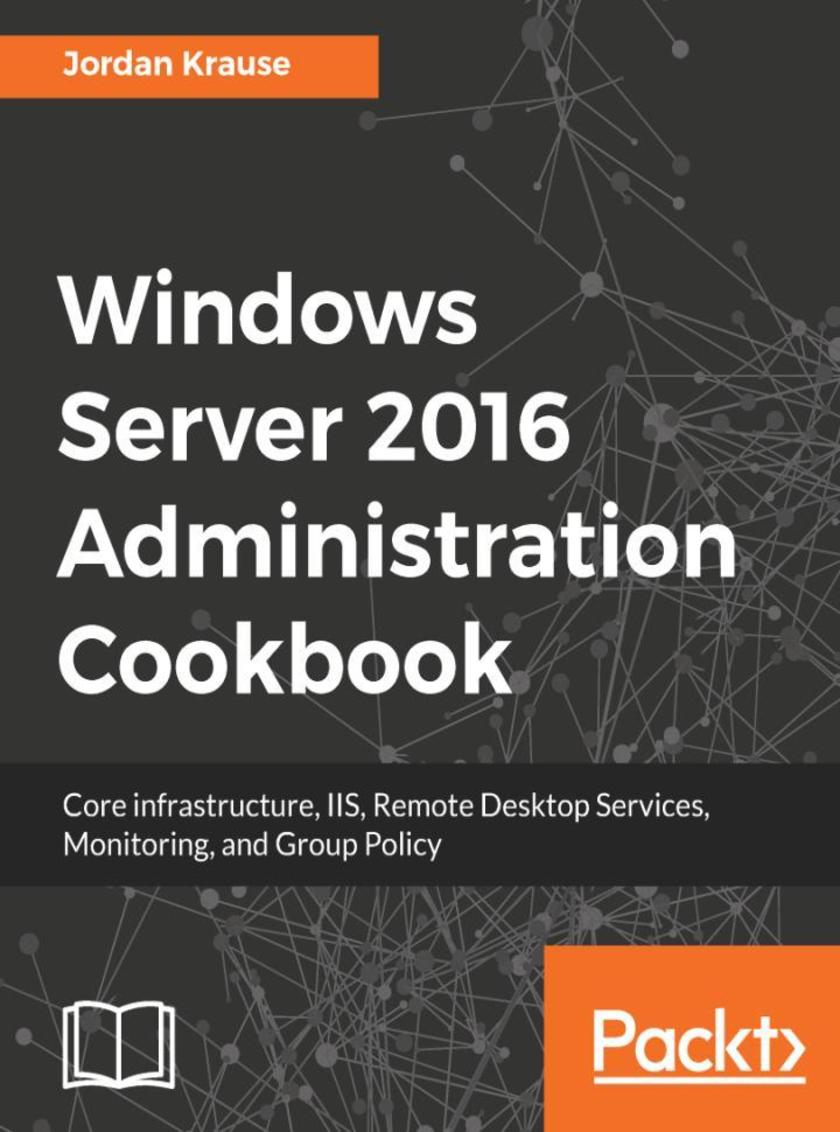
Windows Server 2016 Administration Cookbook
¥54.49
This book contains more than 65 recipes that will equip you with what you need to know to work with Windows 2016 Server. This book will help you learn how to administrate your Windows Server for optimal performance. About This Book ? A focussed guide to help you with the core functionalities of Windows Server 2016 ? Explore tasks that will help you build a datacenter from scratch using Windows Server 2016 ? Step-by-step instructions for common Windows Server administration duties Who This Book Is For This book is for system administrators or IT professionals who want the skills to manage and maintain the core infrastructure of a Windows Server 2016 environment.? Prior experience in Windows Server 2012 R2 environments will be helpful. What You Will Learn ? Become skilled in the navigation of Windows Server 2016, and explore the technologies and options that it provides ? Build the infrastructure required for a successful Windows Server network ? Move away from those open-source web server platforms and start migrating your websites to Server 2016's Internet Information Services today ? Provide a centralized point for users to access applications and data by confguring Remote Desktop Services ? Compose optimal Group Policies In Detail Windows Server 2016 is an operating system designed to run on servers. It supports enterprise-level data storage, communications, management, and applications. This book contains specially selected, detailed help on core, essential administrative tasks of Windows Server 2016. This book starts by helping you to navigate the interface of Windows Server 2016, and quickly shifts gears to implementing roles that are necessarily in any Microsoft-centric datacenter. This book will also help you leverage the web services platform built into Windows Server 2016, available to anyone who runs this latest and greatest Server operating system. Further, you will also learn to compose optimal Group Policies and monitor system performance and IP address management. This book will be a handy quick-reference guide for any Windows Server administrator, providing easy to read, step-by-step instructions for many common administrative tasks that will be part of any Server Administrator’s job description as they administer their Windows Server 2016 powered servers. The material in the book has been selected from the content of Packt's Windows Server 2016 Cookbook by Jordan Krause to provide a specific focus on key Windows Server administration tasks. Style and approach This book contains recipes that have been specially selected to help with the core, essential administrative tasks of Windows Server 2016.
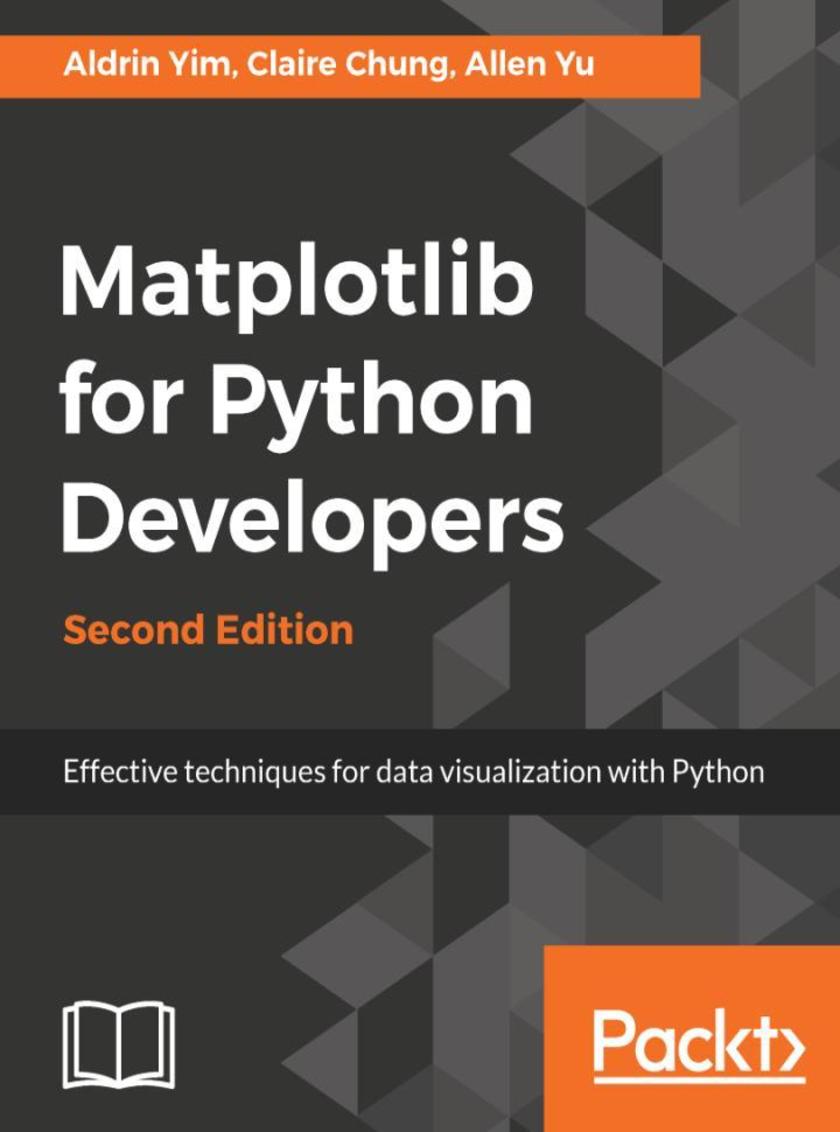
Matplotlib for Python Developers
¥73.02
Leverage the power of Matplotlib to visualize and understand your data more effectively About This Book ? Perform effective data visualization with Matplotlib and get actionable insights from your data ? Design attractive graphs, charts, and 2D plots, and deploy them to the web ? Get the most out of Matplotlib in this practical guide with updated code and examples Who This Book Is For This book is essentially for anyone who wants to create intuitive data visualizations using the Matplotlib library. If you’re a data scientist or analyst and wish to create attractive visualizations using Python, you’ll find this book useful. Some knowledge of Python programming is all you need to get started. What You Will Learn ? Create 2D and 3D static plots such as bar charts, heat maps, and scatter plots ? Get acquainted with GTK+3, Qt5, and wxWidgets to understand the UI backend of Matplotlib ? Develop advanced static plots with third-party packages such as Pandas, GeoPandas, and Seaborn ? Create interactive plots with real-time updates ? Develop web-based, Matplotlib-powered graph visualizations with third-party packages such as Django ? Write data visualization code that is readily expandable on the cloud platform In Detail Python is a general-purpose programming language increasingly being used for data analysis and visualization. Matplotlib is a popular data visualization package in Python used to design effective plots and graphs. This is a practical, hands-on resource to help you visualize data with Python using the Matplotlib library. Matplotlib for Python Developers, Second Edition shows you how to create attractive graphs, charts, and plots using Matplotlib. You will also get a quick introduction to third-party packages, Seaborn, Pandas, Basemap, and Geopandas, and learn how to use them with Matplotlib. After that, you’ll embed and customize your plots in third-party tools such as GTK+3, Qt 5, and wxWidgets. You’ll also be able to tweak the look and feel of your visualization with the help of practical examples provided in this book. Further on, you’ll explore Matplotlib 2.1.x on the web, from a cloud-based platform using third-party packages such as Django. Finally, you will integrate interactive, real-time visualization techniques into your current workflow with the help of practical real-world examples. By the end of this book, you’ll be thoroughly comfortable with using the popular Python data visualization library Matplotlib 2.1.x and leveraging its power to build attractive, insightful, and powerful visualizations. Style and approach Step by step approach to learning the best of Matplotlib 2.1.x
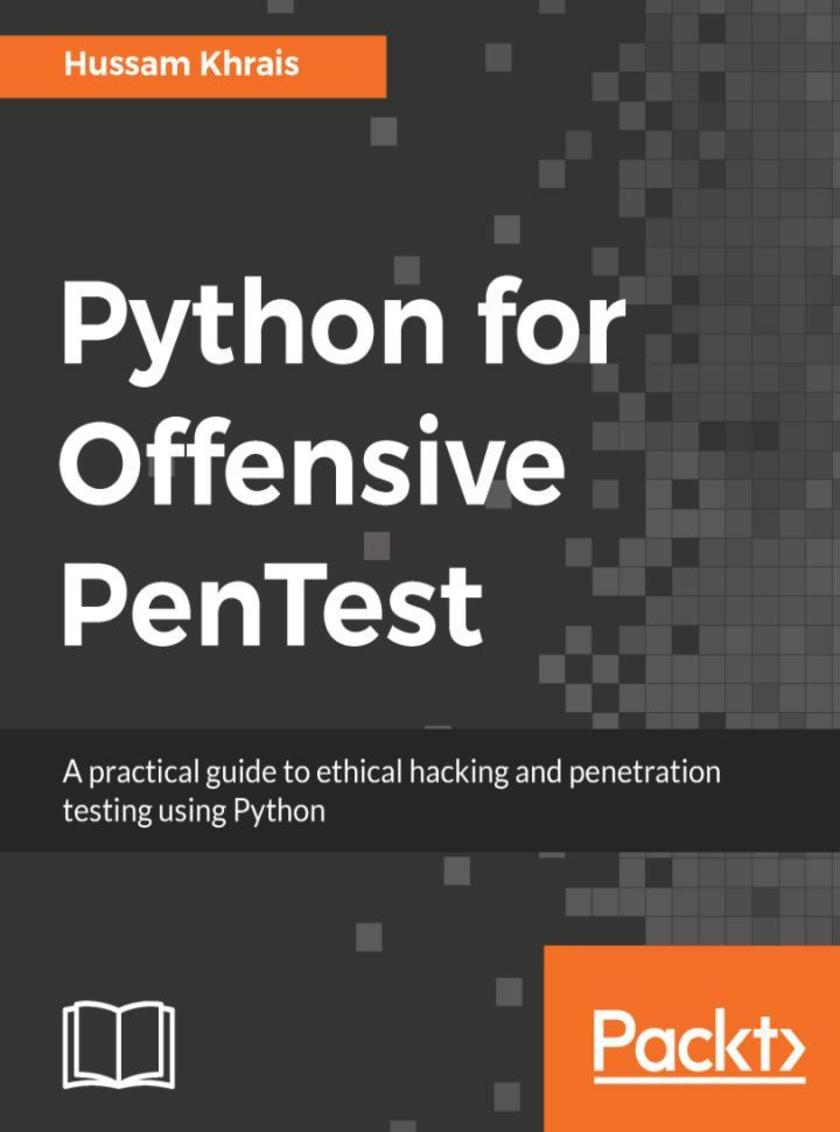
Python for Offensive PenTest
¥54.49
Your one-stop guide to using Python, creating your own hacking tools, and making the most out of resources available for this programming language About This Book ? Comprehensive information on building a web application penetration testing framework using Python ? Master web application penetration testing using the multi-paradigm programming language Python ? Detect vulnerabilities in a system or application by writing your own Python scripts Who This Book Is For This book is for ethical hackers; penetration testers; students preparing for OSCP, OSCE, GPEN, GXPN, and CEH; information security professionals; cybersecurity consultants; system and network security administrators; and programmers who are keen on learning all about penetration testing. What You Will Learn ? Code your own reverse shell (TCP and HTTP) ? Create your own anonymous shell by interacting with Twitter, Google Forms, and SourceForge ? Replicate Metasploit features and build an advanced shell ? Hack passwords using multiple techniques (API hooking, keyloggers, and clipboard hijacking) ? Exfiltrate data from your target ? Add encryption (AES, RSA, and XOR) to your shell to learn how cryptography is being abused by malware ? Discover privilege escalation on Windows with practical examples ? Countermeasures against most attacks In Detail Python is an easy-to-learn and cross-platform programming language that has unlimited third-party libraries. Plenty of open source hacking tools are written in Python, which can be easily integrated within your script. This book is packed with step-by-step instructions and working examples to make you a skilled penetration tester. It is divided into clear bite-sized chunks, so you can learn at your own pace and focus on the areas of most interest to you. This book will teach you how to code a reverse shell and build an anonymous shell. You will also learn how to hack passwords and perform a privilege escalation on Windows with practical examples. You will set up your own virtual hacking environment in VirtualBox, which will help you run multiple operating systems for your testing environment. By the end of this book, you will have learned how to code your own scripts and mastered ethical hacking from scratch. Style and approach This book follows a practical approach that takes a gradual learning curve, building up your knowledge about ethical hacking, right from scratch. The focus is less on theory and more on practical examples through a step-by-step approach.
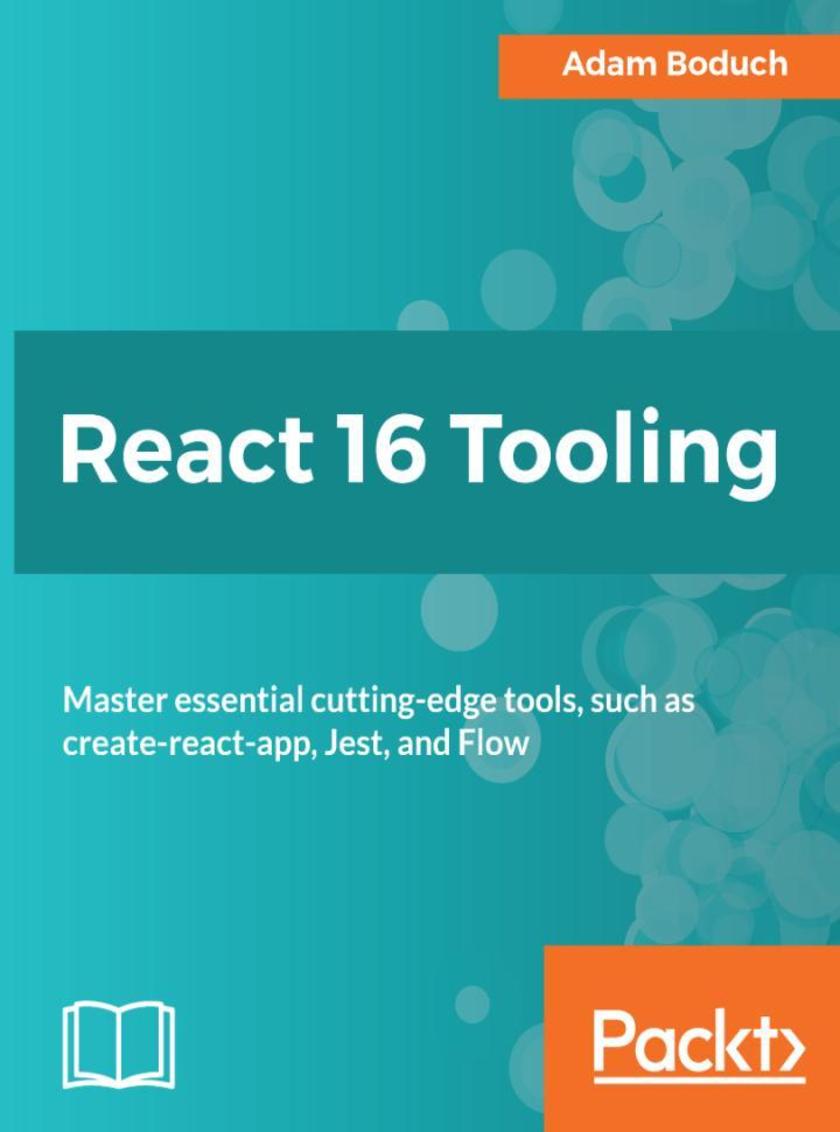
React 16 Tooling
¥81.74
React 16 Tooling covers the most important tools, utilities, and libraries that every React developer needs to know - in detail. About This Book ? Each chapter presents meta-development solutions to help React developers ? The tools used are presented in a practical, solution-oriented approach with no fluff ? The chapters are arranged in a logical order that mirrors a typical React development workflow, but you are free to tweak the approaches discussed to fit your own unique style Who This Book Is For This book is for React developers of any skill level who want to make their lives easier. It helps to have some familiarity with React, but if you are an experienced web developer looking at React, then this book will show you how to build a resilient toolset around you before you begin. What You Will Learn ? Bootstrap a React application using create-react-app ? Isolate React component development using Storybook ? Write effective unit tests for your React components using Jest ? Ensure that your component code is to standard using ESLint ? Use browser extensions and built-in component instrumentation to debug React applications ? Enable type safety in React components with Flowtype ? Deploy React applications inside a Docker container as part of a larger application stack In Detail React 16 Tooling covers the most important tools, utilities, and libraries that every React developer needs to know - in detail. As React has grown, the amazing toolset around it has also grown, adding features and enhancing the development workflow. Each of these essential tools is presented in a practical manner and in a logical order mirroring the development workflow. These tools will make your development life simpler and happier, enabling you to create better and more performant apps. Adam starts with a hand-picked selection of the best tools for the React 16 ecosystem. For starters, there's the create-react-app utility that's officially supported by the React team. Not only does this tool bootstrap your React project for you, it also provides a consistent and stable framework to build upon. The premise is that when you don't have to think about meta development work, more focus goes into the product itself. Other React tools follow this same approach to automating and improving your development life. Jest makes unit testing quicker. Flow makes catching errors easier. Docker containers make deployment in a stack simpler. Storybook makes developing components straightforward. ESLint makes writing standardized code faster. The React DevTools plugin makes debugging a cinch. React 16 Tooling clears away the barriers so you can focus on developing the good parts. In this book, we'll look at each of these powerful tools in detail, showing you how to build the perfect React ecosystem to develop your apps within. Style and approach This book covers React tools that help developers with the most relevant challenges they face today. Each chapter begins by defining the challenge faced by developers and why the tool is required, then shows how to fix the problem using React tooling.
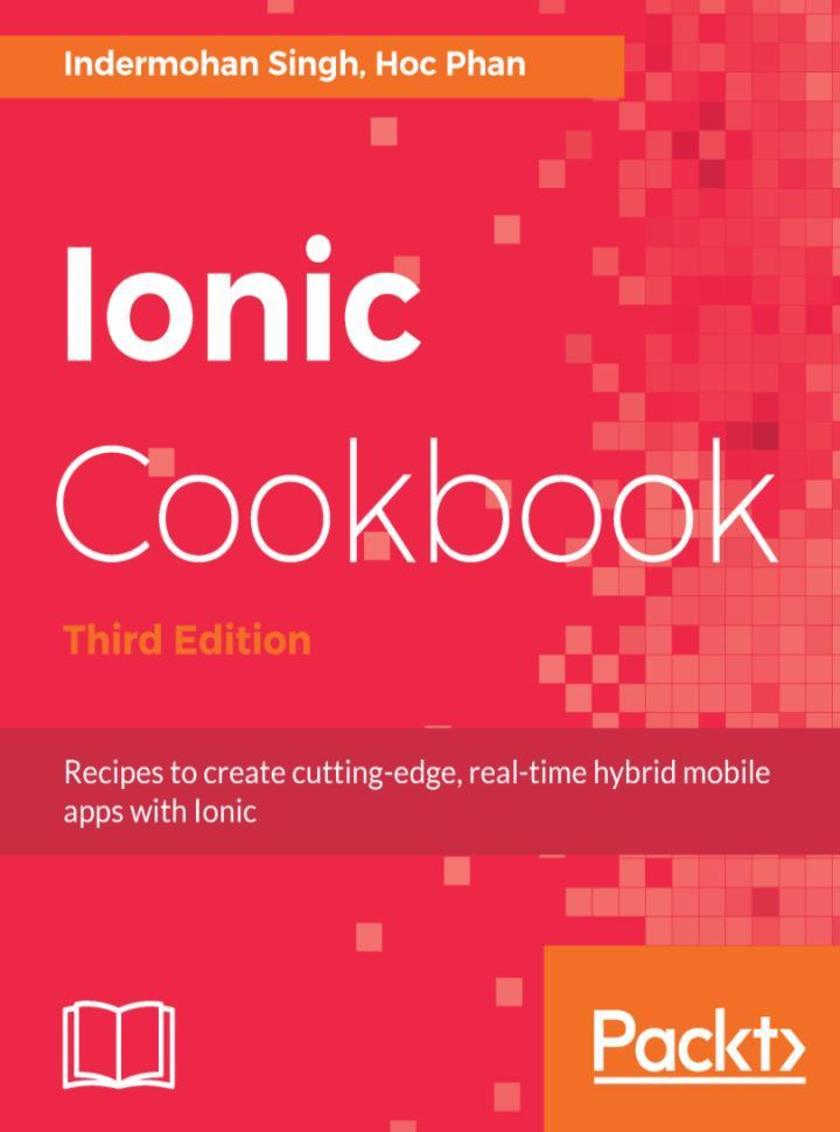
Ionic Cookbook
¥81.74
Solve all your Ionic-related issues through dedicated recipes that will help you get the best out of Ionic. Working with Ionic components to find out the best way to share data between them effectively. About This Book ? Leverage Ionic 3.9 and its exciting new features to create cutting-edge, real-time apps ? Work through simple recipes to address your problems directly and solve them effectively ? Get examples at each step to guide you on your learning curve with Angular Who This Book Is For This book targets JavaScript developers. No previous knowledge of Ionic is necessary, but prior knowledge of web development techniques would be useful. What You Will Learn ? Help readers to jump-start Ionic apps ? Explore essential features of Ionic with examples ? Learn how to use native device functionalities ? Make the best use of the REST API to handle back-end services ? Work with Cordova to support native functionalities on both iOS and Android. ? Master advanced topics in app development such as deep linking and lazy loading In Detail Ionic is the preferred choice for JavaScript developers to develop real-time hybrid applications. This book will get you started with Ionic 3.9 and help you create Angular 5 components that interact with templates. You will work with Ionic components and find out how to share data efficiently between them. You'll discover how to make the best use of the REST API to handle back-end services and then move on to animating your application to make it look pretty. You then learn to add in a local push notification in order to test the app. Then you'll work with Cordova to support native functionalities on both iOS and Android. From there, you'll get to grips with using the default themes for each platform and customizing your own. We then take you through the advanced Ionic features like lazy loading, deep linking, localizing ionic apps etc. Finally, you'll see how best to deploy your app to different platforms. This book will solve all your Ionic-related issues through dedicated recipes that will help you get the best out of Ionic. Style and approach The book's recipe-based approach will help you get the best out of Ionic 3.9
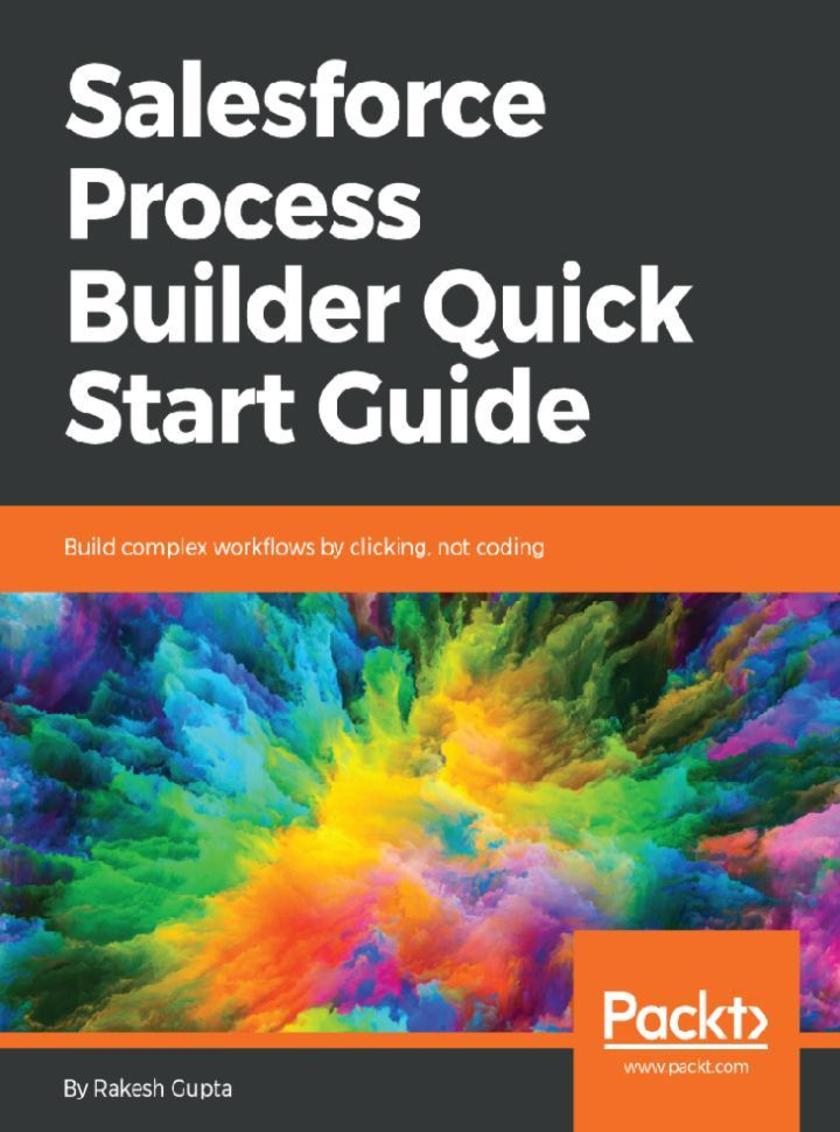
Salesforce Process Builder Quick Start Guide
¥52.31
Click your way to automating business processes with Salesforce Visual Workflow Key Features *Create and maintain complex business processes using Process builder *Discover how to debug and deploy Flow and Process Builder *Use new or existing Flows to work with Salesforce Lightning Experience Book Description Salesforce Management System is an information system used in CRM to automate business processes, such as sales and marketing. Process Builder is a visual tool created to automate business processes in Salesforce. It enables users with no coding expertise to build complex Salesforce workflows. The book starts with an introduction to Process Builder, focussing on the building blocks of creating Processes. Then you will learn about different applications of Process Builder for developing streamlined solutions. You will learn how to easily automate business processes and tackle complex business scenarios using Processes. The book explains the workings of the Process Builder so that you can create reusable processes. It also explains how you can migrate existing Workflow Rules to Process Builder. By the end of the book, you will have a clear understanding of how to use Flows and Process Builder to optimize code usage. What you will learn *Develop an application using point and click with the help of Process Builder *Bypass Processes for specific users *Understand the concepts of reusable processes *Handle complex business processes using Process Builder and keep them clean *Work with formulae in Process Builder to minimize the code required *Create a process with no criteria so as to minimize the amount of rework *Overcome Salesforce's known limitation in terms of referencing picklist values Who this book is for This book is for people who want to use Process Builder to automate their business requirements by clicking, not coding. A basic understanding of Salesforce is required, but not extensive programming knowledge.
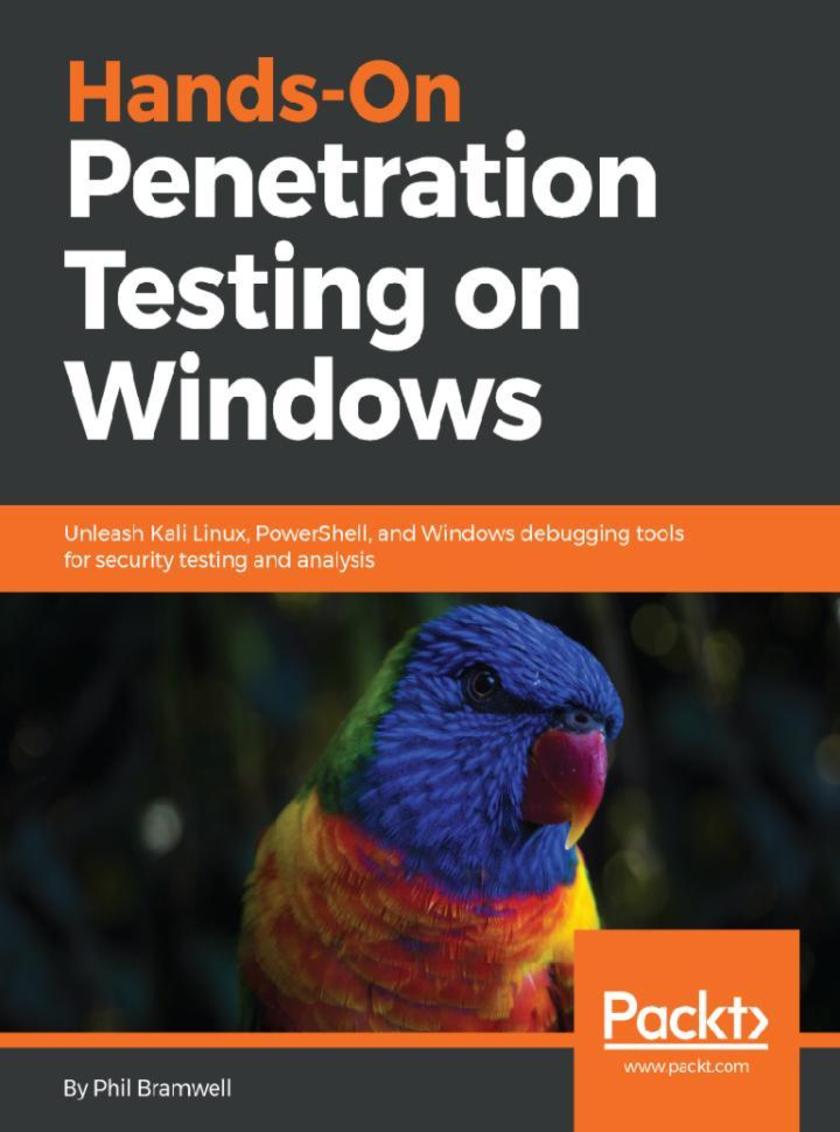
Hands-On Penetration Testing on Windows
¥78.47
Master the art of identifying vulnerabilities within the Windows OS and develop the desired solutions for it using Kali Linux. Key Features *Identify the vulnerabilities in your system using Kali Linux 2018.02 *Discover the art of exploiting Windows kernel drivers *Get to know several bypassing techniques to gain control of your Windows environment Book Description Windows has always been the go-to platform for users around the globe to perform administration and ad hoc tasks, in settings that range from small offices to global enterprises, and this massive footprint makes securing Windows a unique challenge. This book will enable you to distinguish yourself to your clients. In this book, you'll learn advanced techniques to attack Windows environments from the indispensable toolkit that is Kali Linux. We'll work through core network hacking concepts and advanced Windows exploitation techniques, such as stack and heap overflows, precision heap spraying, and kernel exploitation, using coding principles that allow you to leverage powerful Python scripts and shellcode. We'll wrap up with post-exploitation strategies that enable you to go deeper and keep your access. Finally, we'll introduce kernel hacking fundamentals and fuzzing testing, so you can discover vulnerabilities and write custom exploits. By the end of this book, you'll be well-versed in identifying vulnerabilities within the Windows OS and developing the desired solutions for them. What you will learn *Get to know advanced pen testing techniques with Kali Linux *Gain an understanding of Kali Linux tools and methods from behind the scenes *See how to use Kali Linux at an advanced level *Understand the exploitation of Windows kernel drivers *Understand advanced Windows concepts and protections, and how to bypass them using Kali Linux *Discover Windows exploitation techniques, such as stack and heap overflows and kernel exploitation, through coding principles Who this book is for This book is for penetration testers, ethical hackers, and individuals breaking into the pentesting role after demonstrating an advanced skill in boot camps. Prior experience with Windows exploitation, Kali Linux, and some Windows debugging tools is necessary
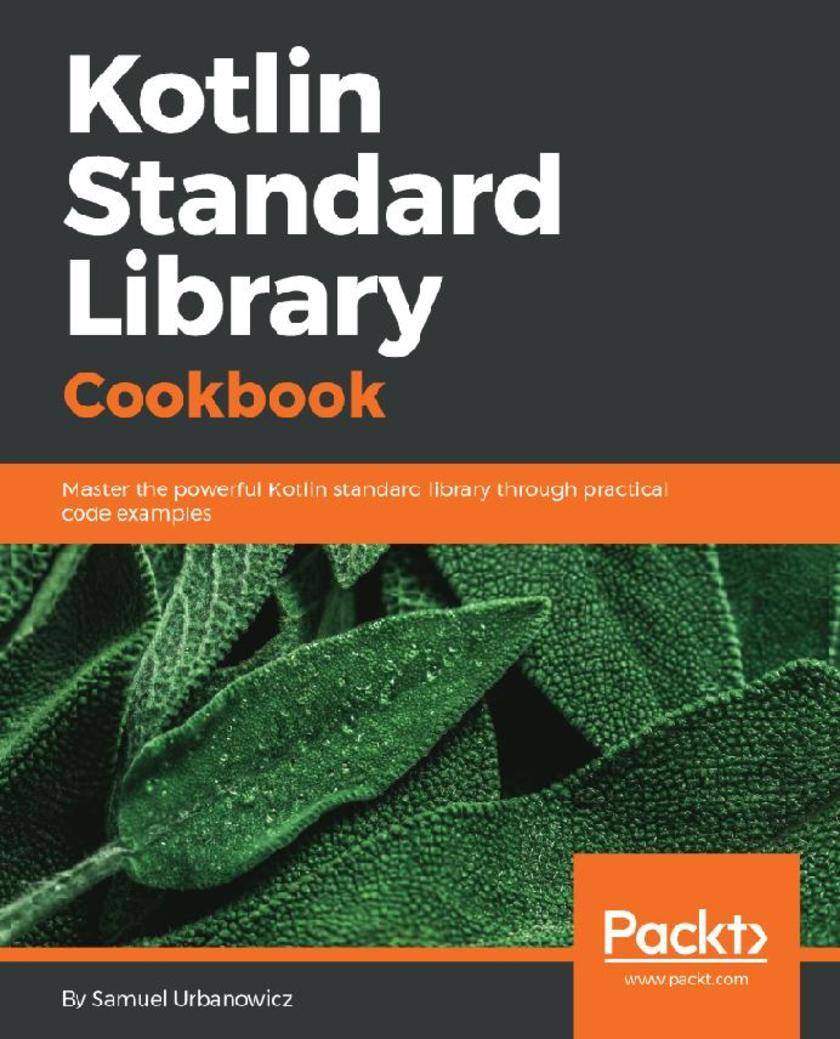
Kotlin Standard Library Cookbook
¥69.75
Gain hands-on experience of installing OpenShift Origin 3.9 in a production configuration and managing applications using the platform you built Key Features *Gain hands-on experience of working with Kubernetes and Docker *Learn how to deploy and manage applications in OpenShift *Get a practical approach to managing applications on a cloud-based platform *Explore multi-site and HA architectures of OpenShift for production Book Description Docker containers transform application delivery technologies to make them faster and more reproducible, and to reduce the amount of time wasted on configuration. Managing Docker containers in the multi-node or multi-datacenter environment is a big challenge, which is why container management platforms are required. OpenShift is a new generation of container management platforms built on top of both Docker and Kubernetes. It brings additional functionality to the table, something that is lacking in Kubernetes. This new functionality significantly helps software development teams to bring software development processes to a whole new level. In this book, we’ll start by explaining the container architecture, Docker, and CRI-O overviews. Then, we'll look at container orchestration and Kubernetes. We’ll cover OpenShift installation, and its basic and advanced components. Moving on, we’ll deep dive into concepts such as deploying application OpenShift. You’ll learn how to set up an end-to-end delivery pipeline while working with applications in OpenShift as a developer or DevOps. Finally, you’ll discover how to properly design OpenShift in production environments. This book gives you hands-on experience of designing, building, and operating OpenShift Origin 3.9, as well as building new applications or migrating existing applications to OpenShift. What you will learn *Understand the core concepts behind containers and container orchestration tools *Understand Docker, Kubernetes, and OpenShift, and their relation to CRI-O *Install and work with Kubernetes and OpenShift *Understand how to work with persistent storage in OpenShift *Understand basic and advanced components of OpenShift, including security and networking *Manage deployment strategies and application’s migration in OpenShift *Understand and design OpenShift high availability Who this book is for The book is for system administrators, DevOps engineers, solutions architects, or any stakeholder who wants to understand the concept and business value of OpenShift.
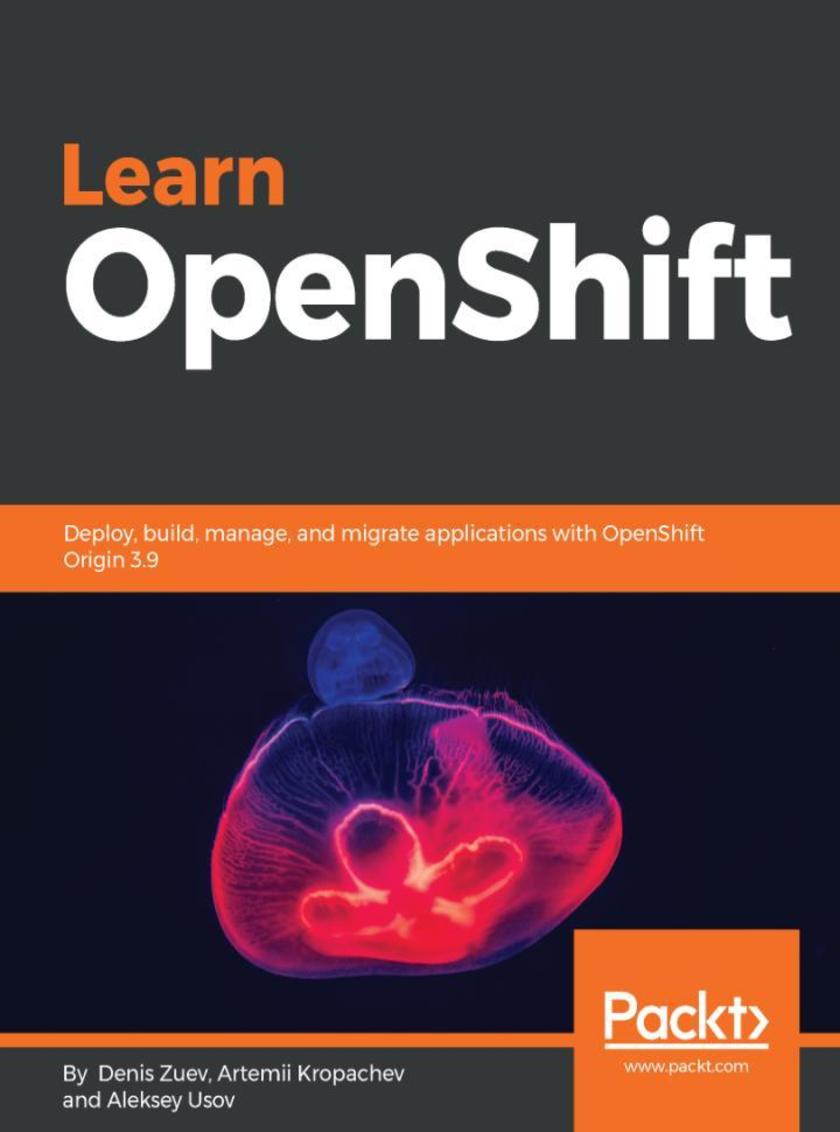
Learn OpenShift
¥69.75
Take advantage of Kotlin's concurrency primitives to write efficient multithreaded applications Key Features *Learn Kotlin’s unique approach to multithreading *Work through practical examples that will help you write concurrent non-blocking code *Improve the overall execution speed in multiprocessor and multicore systems Book Description The primary requirements of modern-day applications are scalability, speed, and making the most use of hardware. Kotlin meets these requirements with its immense support for concurrency. Many concurrent primitives of Kotlin, such as channels and suspending functions, are designed to be non-blocking and efficient. This allows for new approaches to concurrency and creates unique challenges for the design and implementation of concurrent code. Learning Concurrency in Kotlin addresses those challenges with real-life examples and exercises that take advantage of Kotlin's primitives. Beginning with an introduction to Kotlin's coroutines, you will learn how to write concurrent code and understand the fundamental concepts needed to be able to write multithreaded software in Kotlin. You'll explore how to communicate between and synchronize your threads and coroutines to write asynchronous applications that are collaborative. You'll also learn how to handle errors and exceptions, as well as how to leverage multi-core processing. In addition to this, you’ll delve into how coroutines work internally, allowing you to see the bigger picture. Throughout the book you'll build an Android application – an RSS reader – designed and implemented according to the different topics covered in the book What you will learn *Understand Kotlin’s approach to concurrency *Implement sequential and asynchronous suspending functions *Create suspending data sources that are resumed on demand *Explore the best practices for error handling *Use channels to communicate between coroutines *Uncover how coroutines work under the hood Who this book is for If you’re a Kotlin or Android developer interested in learning how to program concurrently to enhance the performance of your applications, this is the book for you.
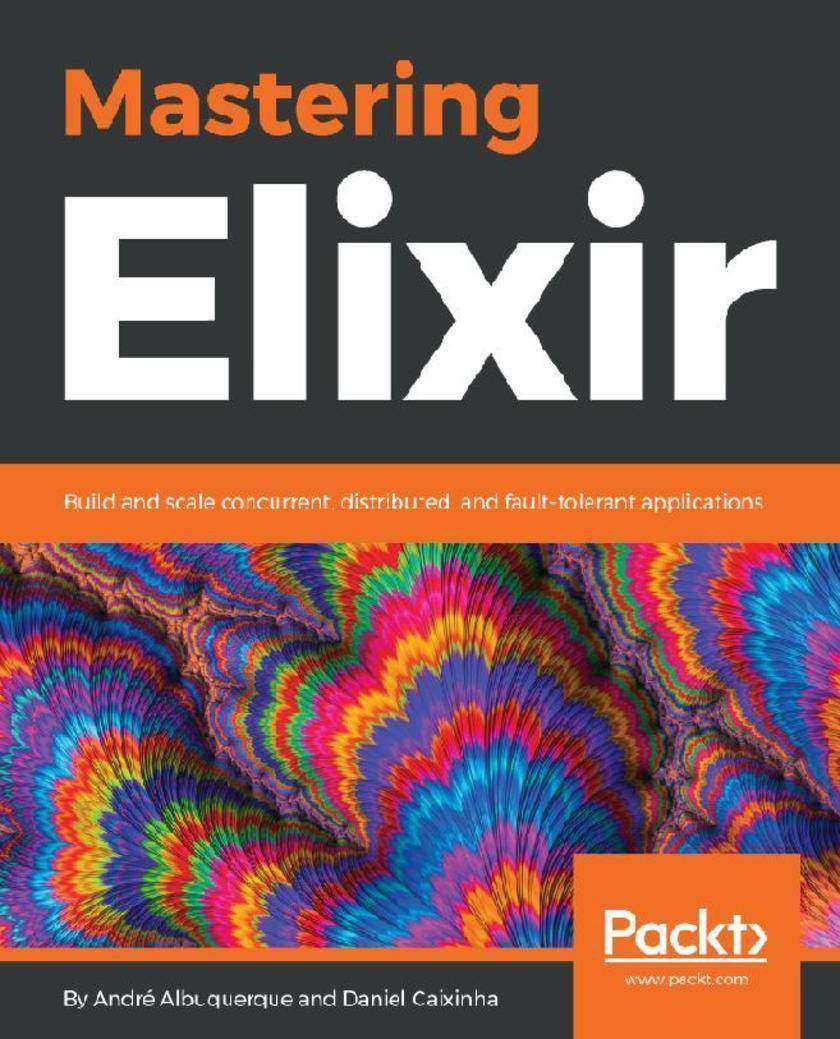
Mastering Elixir
¥78.47
Bring your data to life with Power BI Key Features *Get to grips with the fundamentals of Microsoft Power BI and its Business Intelligence capabilities *Build accurate analytical models, reports and dashboards? *Get faster and more intuitive insights from your data using Microsoft Power BI Book Description Microsoft Power BI is a cloud-based service that helps you easily visualize and share insights using your organization's data.This book will get you started with business intelligence using the Power BI toolset, covering essential concepts such as installation,designing effective data models, as well as building basic dashboards and visualizations to make your data come to life You will learn how to get your data the way you want – connecting to data sources sources and how to clean your data with the Power BI Query Editor. You will next learn how to properly design your data model to make your data easier to work with.. You will next learn how to properly design your data model to navigate table relationships and build DAX formulas to make your data easier to work with. Visualizing your data is another key element of this book, and you will learn how to follow proper data visualization styles and enhanced digital storytelling techniques. By the end of this book, you will understand how to administer your organization's Power BI environment so deployment can be made seamless, data refreshes can run properly, and security can be fully implemented What you will learn *Connect to data sources using both import and DirectQuery options *Use the Query Editor to apply data transformations and data cleansing processes, including learning how to write M and R scripts *Design optimized data models by designing relationships and DAX calculations *Leverage built-in and custom visuals to design effective reports *Use the Power BI Desktop and Power BI Service to implement Row Level Security on your model *Administer a Power BI cloud tenant for your organization *Deploy your Power BI Desktop files into the Power BI Report Server Who this book is for This book is for aspiring Business Intelligence professionals who want to get up and running with Microsoft Power BI. If you have a basic understanding of BI concepts and want to learn how to apply them using Microsoft Power BI, this book is for you.
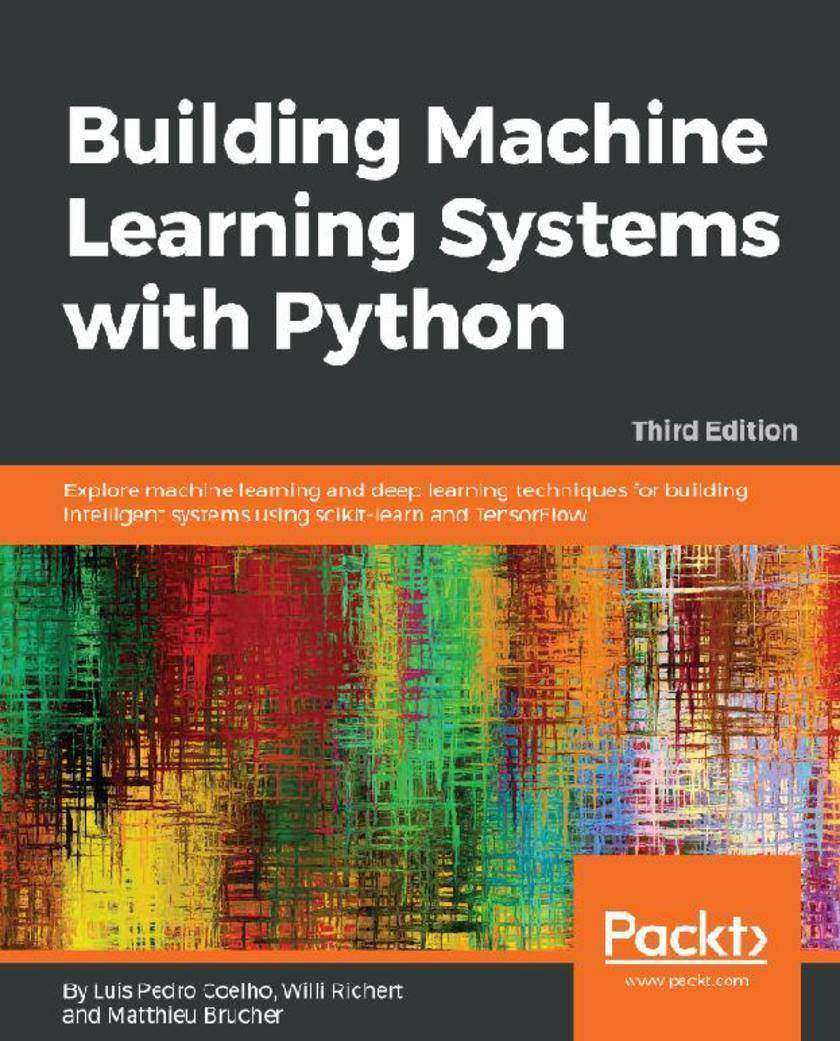
Building Machine Learning Systems with Python
¥69.75
Quickly learn and employ practical recipes for developing real-world, cross-platform applications using Delphi. Key Features *Get to grips with Delphi to build and deploy various cross-platform applications *Design and deploy real-world apps by implementing a single source codebase *Build robust and optimized GUI applications with ease Book Description Delphi is a cross-platform integrated development environment (IDE) that supports rapid application development on different platforms, saving you the pain of wandering amid GUI widget details or having to tackle inter-platform incompatibilities. Delphi Cookbook begins with the basics of Delphi and gets you acquainted with JSON format strings, XSLT transformations, Unicode encodings, and various types of streams. You’ll then move on to more advanced topics such as developing higher-order functions and using enumerators and run-time type information (RTTI). As you make your way through the chapters, you’ll understand Delphi RTL functions, use FireMonkey in a VCL application, and cover topics such as multithreading, using aparallel programming library and deploying Delphi on a server. You’ll take a look at the new feature of WebBroker Apache modules, join the mobile revolution with FireMonkey, and learn to build data-driven mobile user interfaces using the FireDAC database access framework. This book will also show you how to integrate your apps with Internet of Things (IoT). By the end of the book, you will have become proficient in Delphi by exploring its different aspects such as building cross-platforms and mobile applications, designing server-side programs, and integrating these programs with IoT. What you will learn * Develop visually stunning applications using FireMonkey *Deploy LiveBinding effectively with the right object-oriented programming (OOP) approach *Create RESTful web services that run on Linux or Windows *Build mobile apps that read data from a remote server efficiently *Call platform native API on Android and iOS for an unpublished API *Manage software customization by making better use of an extended RTTI *Integrate your application with IOT Who this book is for Delphi Cookbook is for intermediate developers with a basic knowledge of Delphi who want to discover and understand all the development possibilities offered by it.
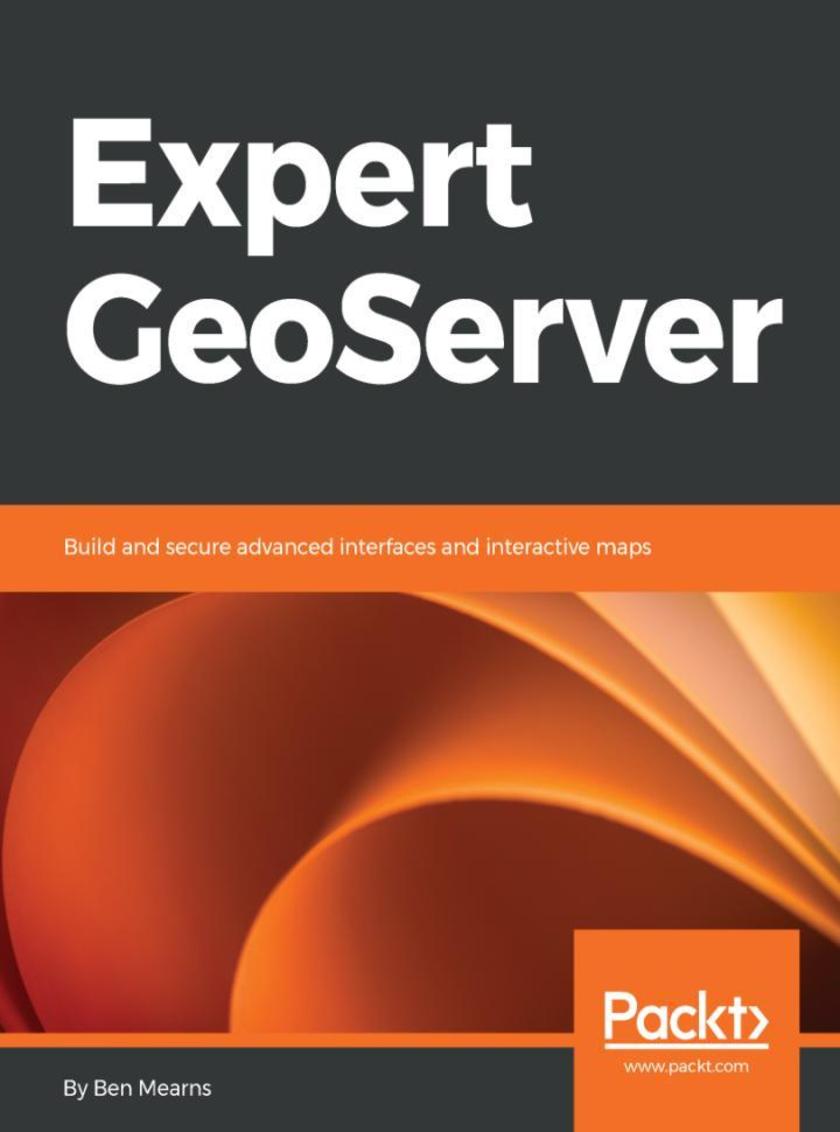
Expert GeoServer
¥52.31
Explore TensorFlow's capabilities to perform efficient deep learning on images Key Features *Discover image processing for machine vision *Build an effective image classification system using the power of CNNs *Leverage TensorFlow’s capabilities to perform efficient deep learning Book Description TensorFlow is Google’s popular offering for machine learning and deep learning, quickly becoming a favorite tool for performing fast, efficient, and accurate deep learning tasks. Hands-On Deep Learning for Images with TensorFlow shows you the practical implementations of real-world projects, teaching you how to leverage TensorFlow’s capabilities to perform efficient image processing using the power of deep learning. With the help of this book, you will get to grips with the different paradigms of performing deep learning such as deep neural nets and convolutional neural networks, followed by understanding how they can be implemented using TensorFlow. By the end of this book, you will have mastered all the concepts of deep learning and their implementation with TensorFlow and Keras. What you will learn *Build machine learning models particularly focused on the MNIST digits *Work with Docker and Keras to build an image classifier *Understand natural language models to process text and images *Prepare your dataset for machine learning *Create classical, convolutional, and deep neural networks *Create a RESTful image classification server Who this book is for Hands-On Deep Learning for Images with TensorFlow is for you if you are an application developer, data scientist, or machine learning practitioner looking to integrate machine learning into application software and master deep learning by implementing practical projects in TensorFlow. Knowledge of Python programming and basics of deep learning are required to get the best out of this book.
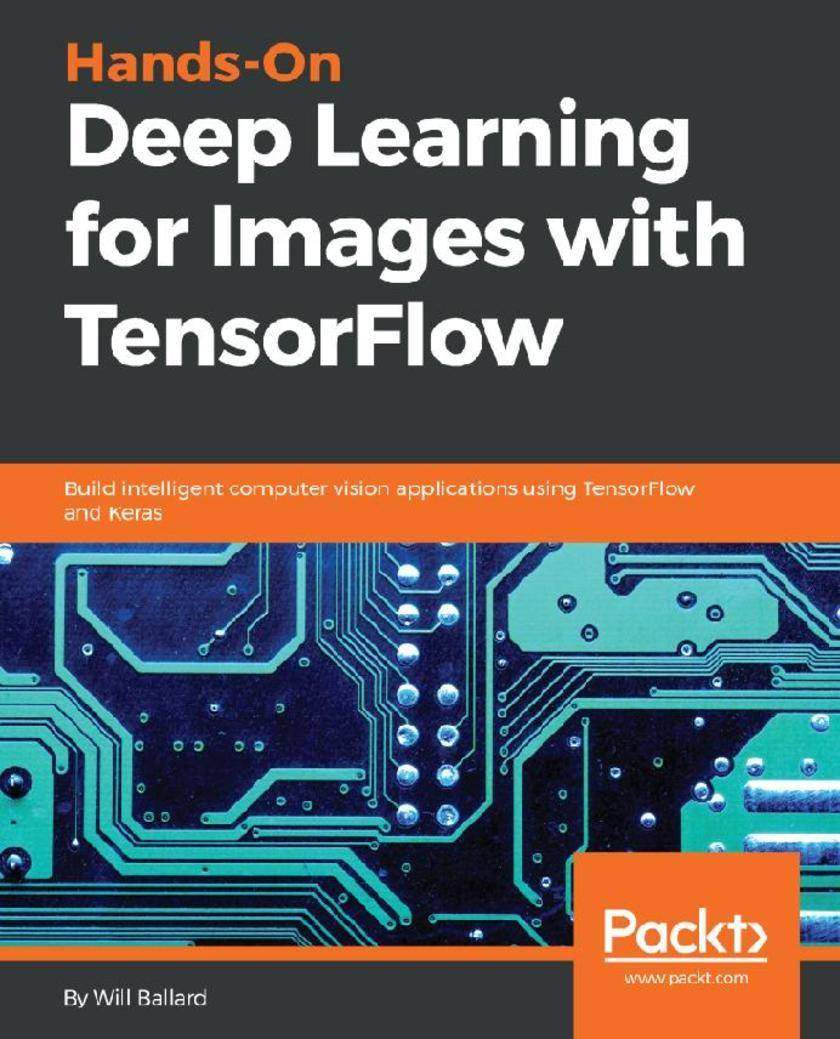
Hands-On Deep Learning for Images with TensorFlow
¥43.59
Build modern, fast, and progressive web applications using modern features of PHP 7 and TypeScript Key Features *Explore the latest features of Angular and Laravel to build applications that are powerful, consistent, and maintainable *Develop modern user interfaces with a reusable component-based architecture using Angular 6 and Bootstrap 4 *Learn how to build secure backend APIs with Laravel Book Description Angular, considered as one of the most popular and powerful frontend frameworks, has undergone a major overhaul to embrace emerging web technologies so that developers can build cutting-edge web applications. This book gives you practical knowledge of building modern full-stack web apps from scratch using Angular with a Laravel Restful back end. The book begins with a thorough introduction to Laravel and Angular and its core concepts like custom errors messages, components, routers, and Angular-cli, with each concept being explained first, and then put into practice in the case-study project. With the basics covered, you will learn how sophisticated UI features can be added using NgBootstrao and a component-based architecture. You will learn to extend and customize variables from Bootstrap CSS framework. You will learn how to create secure web application with Angular and Laravel using token based authentication. Finally, you will learn all about progressive web applications and build and deploy a complete fullstack application using Docker and Docker-compose. By the end of this book, you'll gain a solid understanding of Angular 6 and how it interacts with a Laravel 5.x backend What you will learn *Explore the core features of Angular 6 to create sophisticated user interfaces *Use Laravel 5 to its full extent to create a versatile backend layer based on RESTful APIs *Configure a web application in order to accept user-defined data and persist it into the database using server-side APIs *Build an off-line-first application using service-worker and manifest file *Deal with token based authentication on single page application (SPA). *Secure your application against threats and vulnerabilities in a time efficient way *Deploy using Docker and Docker-compose Who this book is for This book targets developers who are new to Angular, Laravel, or both, and are seeking a practical, best-practice approach to development with these technologies. They must have some knowledge of HTML, CSS and JavaScript. Familiarity of PHP is assumed to get the most from this book.




 购物车
购物车 个人中心
个人中心



